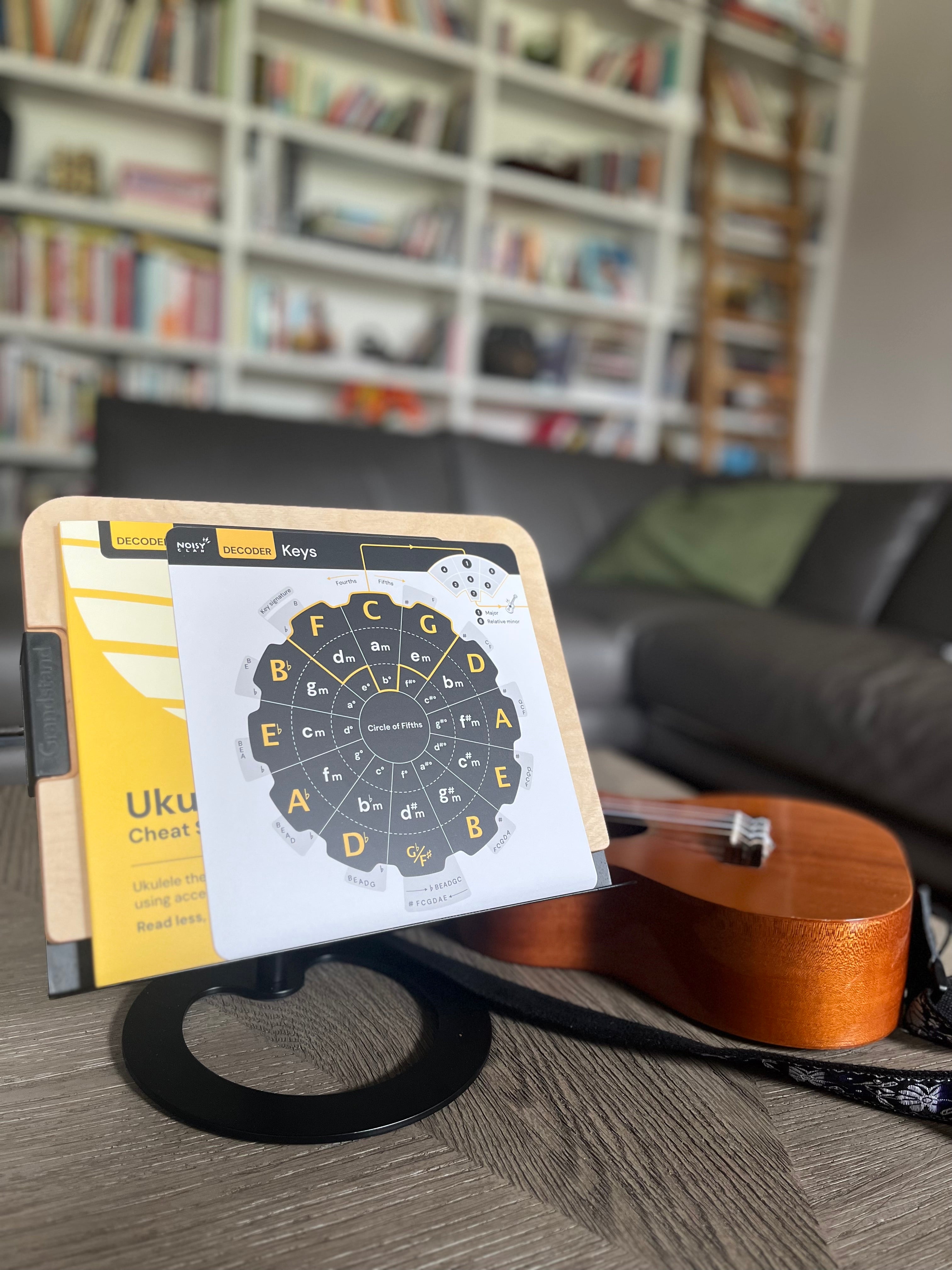One of the greatest cheat sheets in music theory is the circle of fifths. Our Keys cheat sheet organises all possible musical keys (there are 12!) into a handy circle. A key is a family of notes and chords that work with the tonic (or root) of the key. Each key has a unique set of seven notes. The seven chords that are formed from these notes create the framework for melodies and harmonies. The brilliance of the circle of fifths is that it arranges the keys by closeness. It doesn’t organise the circle alphabetically. The circle isn’t arranged A, A#, B, C etc. The circle of fifths starts with the key of C at the top. C is the only key that only contains natural notes.
Navigation
Noisy Clan’s Ukulele Cheat Sheet embodies the circle of fifths on one side. On the other side, we take the main keys from the circle of fifths and organise all the chords that can be played in that key. For example in the key of C, you will find the seven chords organised in a row: C, dm, em, F, G, am, B dim. This is a good way to actually apply the circle of fifths theory to your ukulele playing and see the chord shapes.
Application
Beyond learning the chords, there are many ways in which knowing the keys in the circle of fifths can be useful:
-
Transposition:
Transposing a piece of music involves changing the key while maintaining its overall structure. The circle of fifths is immensely useful for this task. Musicians can simply move around the circle to find a new key, understanding the required sharps or flats and their positions. This is essential for accommodating different instruments or vocal ranges or adapting a piece to suit a particular performer's preference.
-
Scale Building:
The circle of fifths is a helpful tool for constructing scales. The major scale is the starting point for understanding every other type of scale. Scales are extremely useful because they form the foundation for your riffs, solos and melodies.
-
Key Signatures:
As mentioned above, the circle of fifths clearly displays the key signatures for each key. By examining the number of sharps or flats in a composition, musicians can quickly identify the key in which it is written. This is particularly helpful for performers, as it allows them to prepare for the specific scales and key-related elements they'll encounter in a piece.
-
Composition / Chord Progressions:
The circle of fifths provides valuable insights into chord progressions within a given key. Musicians sometimes refer to the primary chords in a key as the I, IV, and V chords. We simply call them the 1, 4 and 5 chords. For example, in the key of C major, these chords would be C major (1), F major (4), and G major (5). Understanding these relationships aids in composing and improvising chord progressions that sound harmonically pleasing. Because let’s face it, you could throw any chords together, but the reality is, if they aren't harmonically cohesive, it might not sound too good …
Check out our digital decoder, if you haven't done so already to get to grips with how keys actually work in cohesion with each other. The Decoder cleverly only shows you the relevant information for each key you are focusing on.





